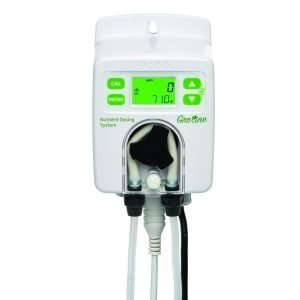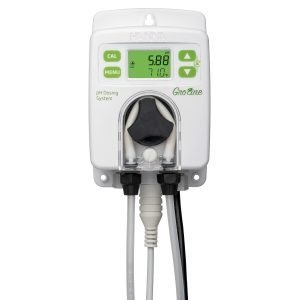Here at Hanna Instruments, we care about environment and climate changes. We find it as our human responsibility to take care of our planet and try to BE the change in the world. We project our systems so it would have minimal impact on the environment and to maximise reductions of waste material, water and fertilizers.
„Climate change is projected to affect agriculture in Europe and around the globe, altering growing conditions, production patterns and yields, with impacts on prices, trade and regional markets, according to the EEA briefing ‘Global climate change impacts and the supply of agricultural commodities to Europe’.“
Agriculture often places significant pressure on natural resources and the environment. Sustainable agricultural practices are intended to protect the environment, expand the Earth’s natural resource base, and maintain and improve soil fertility.
There are several key areas of sustainable agriculture. The goal is to engage farmers in the development and adoption of practices that are profitable and environmentally friendly in order to mitigate and adapt to climate change.
The emphasis is on improvement of production efficiency, productivity, and profitability
- Address threats from pests and diseases
- Improve the quality of surface water and groundwater resources
Climate change causes fluctuation in production of major crops in different years. The growing season has been massively impacted by different parameters in climate changes.
But what if there was a way to abandon the „growing season“ mindset and select to grow your products 12 months of the year?
Implementing hydroponics farming is changing the agriculture standards and affecting how we produce our food for the better and is addressing the consequences of climate change in the process.
Automating the production processes of existing plants becomes a determining factor for business success. The control of the physical and chemical parameters are crucial for obtaining standardized results and quality products.
For this reason, Hanna Instruments is at the customers disposal in order to evaluate, analyze, and implement automatic control systems for differents production applications.
The practice of running plant nutrients through irrigation systems has increased dramatically over the last 30 years. As careful water management and sustainability become more common issues, the need for high yields of superior-quality crops has increased.
Because of this, more growers are exploring the advantages of combining their water and fertilizer applications.
If you are Agriculture producer and don’t want to leave your crops exposed to sudden value changes or uncontrolled environment than the best example of process control is HI10000 – Fertigation system
Fertigation - A key factor in agriculture
Irrigation is one of the most important operations in agriculture. With proper irrigation the quality and quantity of crops can be significantly enhanced.
Correct irrigation is not a simple process: the quantity of water must be sufficient for crops, and if not, photosynthesis and overall growth is impeded. However, if the amount of water is more than required, plant growth may become excessive, producing a tall, softer and/or damaged product.
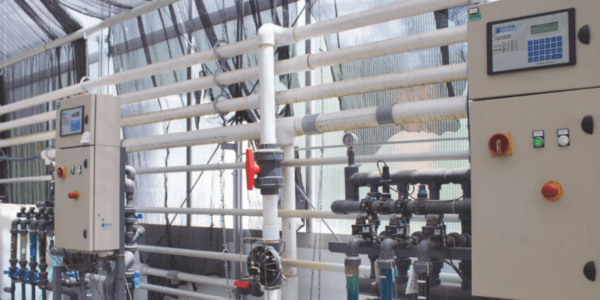

Meet our HS10.00X System
We design and manufacture a complete, ready-to-install, ferti-irrigation system for our customers.
At first, we collect the information and requests of the agronomist to create a system that corresponds to the actual needs of the customer. Afterward, we analyze the existing infrastructures to be able to interface our systems with the fixture already installed.
Finally, we produce the customized system and proceed with the installation, commissioning, and training of the personnel in charge.
Our ferti-irrigation systems have multiple applications:
- Outdoor farming
- Indoor (soil) farming
- Hydroponics
- Aeroponic
Our fertigation system integrates Hanna Instruments process equipment with high-quality industrial products to create two types of systems:
- Direct injection of nutrients
- Mixing tank
The Advantages of Direct Independent Nutrient Injection
Some fertilizer concentrates (stock solutions) can interact to form insoluble compounds and precipitates. Care must be taken to ensure these concentrates remain separate. Fertilizers containing calcium must not be mixed with fertilizers containing sulfates or phosphates while in concentrated form. The HI10000 utilizes separate and independent nutrient injectors that completely isolate concentrates until they are introduced into the irrigation stream where they are diluted and precisely mixed.
Ca(NO3)2 (Calcium Nitrate) + (NH4)2SO4 (Ammonium Sulfate) > CaSO4 (Precipitate of Calcium Sulfate)
When precipitates form, they tie up key nutrients and make them unavailable to the plants. Precipitates also cause clogging of the irrigation lines and fouling of irrigation equipment.
Fertigation Controller
The Fertigation Controller can control the quantity of irrigation water based on time or volume. Different sectors can be irrigated at different times during the day with different water quantities.
With the Fertigation Controller, each irrigation program provides control of pH and conductivity. When necessary, a specific program performs a pH correction by the introduction of an acid or base into the irrigation water. pH control is based on multiple sensor input and a specific set point, while conductivity control is directly related to the level of fertilization.
When the Fertigation Controller commands the addition of 1 to multiple fertilizers in the irrigation stream, conductivity sensors continually monitor the conductivity of the stream and the overall amount of fertilization is maintained based on a specified set point (limit). The Fertigation Controller can command the addition of multiple (1 to 4) fertilizers to irrigation water. The percentage of each fertilizer is set up by the user and controlled by a specific program based on the conductivity set point.
If a pH or conductivity control problem arises, the program generates an alarm to inform the user. All operations of both control processes are stored in the memory.
The Fertigation controller performs all necessary operations, monitoring, control of irrigation, and fertilization processes. These operations are conducted continuously throughout the day, month and year.
To use and manage the system properly, all the necessary control values must be set (setup mode). During monitoring operations (consulting mode) the user can obtain information about how the system and irrigation process are functioning. Furthermore, the history of all operations for the current and previous days can be accessed.
NEW!
Hanna Instruments is proud to present two new GroLine solutions for the automation of pH and nutrient dosing in cultivation facilities.


HI981413 Nutrient Dosing System
The new HI981413 Nutrient Dosing System is engineered for maintaining the concentration of fertiliser in the nutrient solution used in hydroponics and irrigation water. The meter can be programmed to display results as EC (electrical conductivity) or as TDS (total dissolved solids). The EC results are displayed as mS/cm while TDS is displayed as ppm with a selectable conversion factor from 0.45 to 0.99.
The HI981413 was developed to be an inexpensive solution for the horticulturist to maintain the ideal fertiliser concentrations at all times. Simply insert the probe and injection valve in-line with the recirculation pump and provide the chemical to be dosed.
The HI981413 is available in multiple configurations including a meter and probe option, a kit for in-line mounting, and a complete package that includes bypass loop and panel mounted flow cell. The kit for in-line and flow cell models include aspiration tubing with filter and dispensing tubing with injection valve.
HI981412 pH Dosing System
The new HI981412 is a cost-effective solution for maintaining the ideal pH at all times. Simply insert the probe and injection valve in-line with the recirculation pump and provide the acid to be dosed.
HI981412 is available in multiple configurations including a meter and probe option, a kit for in-line mounting, and a complete package that includes bypass loop and panel mounted flow cell. The kit for in-line and flow cell models include aspiration tubing with filter and dispensing tubing with injection valve.
While these new products are the most convenient way to adopt automation of nutrient and pH in growing systems, Hanna’s GroLine Series has been providing dedicated pH meters and EC meters, monitors and control systems for many years. and there are hundreds of these systems used worldwide in hydroponics, living walls, commercial plant producers and high-tech growing facilities.
The availability of a wide variety of models to suit specific applications, customisability and cost effectiveness of Hanna’s GroLine Series continue to make it a popular choice among growers.
Impact of irrigation water
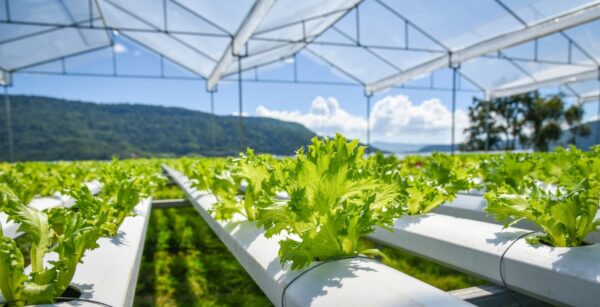

Irrigation water can bring in with it harmfull bacteria and pathogens, for that reason it would be a good idea to keep it properly sanitized.
Hanna Instruments products are the heart of our water treatment systems.
Keeping the water safe and sanitized is one of our core policies. Therefore, we supply and install different types of systems, for example:
- reverse osmosis systems
- chlorination systems
- chemical dosing system for the production
Sanitation efficiency of chlorinated water can be monitored with oxidation-reduction potential (ORP). ORP measures the capacity of solutions to oxidize or reduce compounds. The ORP value of irrigation water has a direct correlation to required contact time to destroy or inactivate harmful bacteria. For example, an ORP value of 665 mV or above will destroy E. coli and Salmonella after less than 20 seconds of contact time. An ORP of 550 mV requires 60 seconds of contact time for the same level of disinfection. Since ORP can be measured rapidly both in-line and off-line, ORP is a convenient parameter for determining effectiveness.
The Hanna PCA300 series chlorine analyzers continuously monitor, control, and adjust chlorine content and pH of a sample stream. From drinking and wastewater treatment to grenhouse sanitation, monitoring chlorine levels has an important bearing on public health as well as ROI and industrial applications.
- 4 models available for monitoring chlorine, pH, and ORP levels.
- Separate alarms can be set for chlorine, pH, ORP and temperature controls.
- User-friendly interface simplifies setup and maintenance.
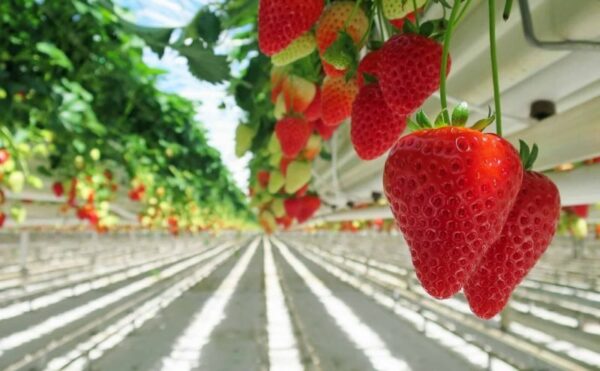

The era of hydroponics is just beginning. There are hundreds of variations of hydroponic farming and all are quite special and unique in a certain way. We need more local, urban, high-tech/new-tech farms to meet the food demand in the face of a changing climate.
The greatest thing about it is that you don’t need to do much to get involved in the food movement other than buy local and/or grow your own food! It can start with you. Today.
Be the change you want to see in the world!
Author: Nives Vinceković Budor, dipl.kem.ing.
Resources:
https://www.eea.europa.eu/highlights/climate-change-adaptation-is-key

